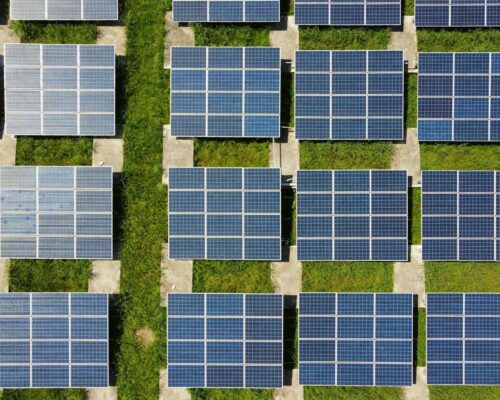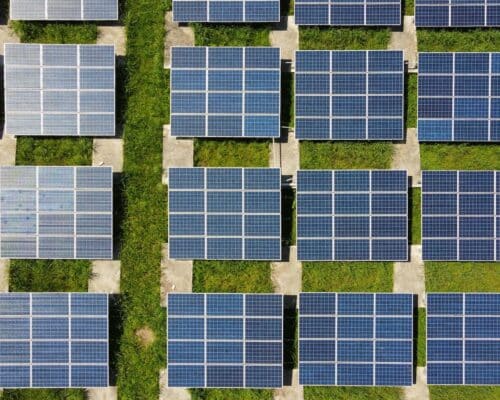Hydropower Reliance Is Risky for Asia
06 May 2024 – by Viktor Tachev
South and Southeast Asia have ambitious plans to increase their hydropower capacity. However, weather anomalies, including climate change-induced prolonged heatwaves, droughts and excessive rainfall, have highlighted its unreliability. The environmental, social, economic and project development drawbacks further strengthen the case for prioritising solar and wind power. While hydropower still has a role in the global clean energy transition, it is more of a supporting one, complementing cheaper, quicker-to-deploy alternatives.
Climate Change: A Major Risk for the Hydropower Capacity in South and Southeast Asia
In its 2021 Climate Impacts on South and Southeast Asian Hydropower report, the IEA said that “the rising temperatures, extreme rainfall patterns, melting glaciers and increasing occurrence of extreme weather events associated with climate change” posed serious challenges to South and Southeast Asian hydropower.
However, since then, climate change’s impacts have only worsened. The following years broke consecutive temperature records, becoming the hottest in history. Scientists fear that 2024 will be no different.
This is a major problem for South and Southeast Asia, where countries like Bhutan and Nepal rely on hydropower for 90% of total electricity generation. Furthermore, the region has ambitious plans to develop its hydropower capacity further, capitalising on its untapped potential. Vietnam is shaping up to be the leading market.
However, all IEA scenarios see a decline in regional mean hydropower capacity by 2100. The agency warns that climate change’s impacts on hydropower plants in the region will be disproportionate. Plants in India, Pakistan, Sri Lanka, Cambodia, Lao PDR, Myanmar, Thailand and Vietnam will be most affected. According to the IEA, the hydrocapacity in these nations will see a continuous decline until 2100. The higher the temperature rises, the harsher the impact on the plants.
Hydropower plants in countries like Indonesia, Malaysia, the Philippines, Bhutan and Nepal will see a drop in hydropower capacity factor by 2059 and a rebound after that. However, the IEA notes that a higher GHG concentration in those regions will lead to a more dramatic bounce in the hydropower capacity factor in the last 40 years of the century.
Scientists are also reaching similar projections. After an extensive assessment of the impact of climate change on Southeast Asia’s hydropower availability, researchers from Singapore found that hydropower generation would be altered significantly in all examined scenarios.
Hydropower Is Already Suffering From Climate Change
In its Clean Energy Market Report from March 2024, the IEA notes that between 2019 and 2023, drought significantly disrupted hydropower worldwide. However, despite this, clean energy adoption has been outpacing fossil fuel adoption by a two-to-one ratio. The main reason is solar and wind capacity deployment.
Data reveals that wet season water levels during 2023 alongside the Mekong basin were consistently lower than long-term averages.
IEA’s CO2 Emissions in 2023 report finds that global hydropower electricity generation saw a record decline in 2023. The main reason was the severe and prolonged droughts, exacerbated by the influence of El Niño. The biggest percentage change in hydropower output was in India and Southeast Asia. Had it remained consistent with the 2022 levels, the agency estimates that an additional 200 TWh would have been generated globally, avoiding around 170 million Mt CO2 emissions from fossil fuel power plants. As a result, the global electricity sector’s emissions would have fallen instead of rising moderately.
Hydropower Doesn’t Come Without its Drawbacks
Across Southeast Asia, the default option for cleaner energy has been hydropower, long regarded as a stable power source. However, despite its reputation, the high costs, project complexity and vulnerability to climate change make it a risky power solution for Southeast Asia to rely on.
Environmental and Social Impacts
Due to their significant scale and complexity, dams can have destructive social, environmental and economic consequences for surrounding areas and local communities. The controversial projects on Borneo island are one example. Furthermore, there are arguments that massive hydropower adoption risks nature loss, fragmenting thousands of kilometres of rivers and disturbing the ecosystems of areas with diverse species.
For example, hundreds of new hydropower projects are planned for the Lower Mekong Basin. The region is already experiencing the negative impacts of upstream dams trapping the river. Experts warn that building additional dams would threaten communities and biodiversity, affecting mangrove forests, disturbing fish migration routes, reducing land fertility and increasing the speed with which the land is sinking.
According to some scientists, hydropower dams in the Mekong River will even have a much more severe environmental impact than human-induced climate change.
In North America, the impacts of hydropower on the welfare of communities and the environment are already being recognised, and dams are being removed as a result.
Developing such large-scale projects requires proper planning to acknowledge the environmental and social specifics of the designated areas.
Climate Change Vulnerability
The WWF estimates that 61% of the planned hydropower projects globally will be in areas with high to extreme risk of floods, droughts or both by 2050. Southeast Asia is among the regions facing the greatest flood risk and frequent and long-lasting heatwaves. These climate variabilities are likely to lead to rainfall increase during the wet season and decrease during the dry season.
This will also impact the efficiency of hydropower dams, diminishing their capacity to ensure energy security.
The issue is already apparent in the upper basin of the Mekong River. Large-scale dams can’t fill their reservoirs, disturbing the generation capacity. Furthermore, recent reports reveal that existing dams holding water during the wet season, usually for the replenishment of reservoirs, have exacerbated severe droughts for people and ecosystems downstream. As a result, experts are starting to question the viability of such projects.
The IEA warns that extreme weather events, such as heavy rainfall and associated landslides, can significantly hinder the development of hydropower projects. Vietnam’s Thua Thien Hue hydropower project in 2020 and Lao PDR’s Xe-Pian Xe-Namnoy Dam in 2018 were examples of this. In India and Pakistan, glaciers melt due to rising temperatures. Glacial floods severely damaged the Dhauliganga Hydropower Plant and the Golen Goal Hydropower Plant.
Without factoring in regional climate unpredictability, hydropower projects’ safe and efficient operations are at risk.
Hydropower Has a Role in the Energy Transition, But Asian Governments Must Prepare
While solar and wind power are the less risky and complex option, hydropower can play a complementing role in ensuring the energy security and decarbonisation progress of South and Southeast Asian nations.
The estimated hydropower potential in the region is enormous. Indonesia alone has up to 80 GW in hydropower resources, while India plans to build 500 GW in capacity by 2030.
However, to capitalise on this potential, the IEA notes that countries should prioritise building climate-resilient hydropower systems capable of anticipating, absorbing, accommodating and recovering from adverse climate impacts. The agency identifies several measures as helpful in this mission.
First, countries should prioritise strengthening their climate impact assessments and building robust databases. This would help overcome the persisting lack of reliable data on climate-related changes and their implications on hydropower generation. Such a move is especially important for existing plants on the Mekong River, designed to operate within long-term climate averages. However, now that these are changing quickly, experts warn about the need to take shifting climate patterns into account.
The IEA also advises South and Southeast Asian countries to integrate climate resilience as a critical element in early hydropower planning and construction stages. The cases of India’s Tapovan Vishnugad Hydropower Project and Lao PDR’s Xe-Pian Xe-Namnoy Hydropower Project showcase its importance. This is also a critical measure to follow once plants go into operation. The ageing process, paired with climate change’s impacts growing more frequent and severe, requires more thorough maintenance. Suitable measures in these processes are regular risk assessments, building and maintenance code improvements, emergency response plans and more.
Improving regional cooperation and sharing mutually beneficial strategies between countries with shared water resources is also advised to ensure adaptive capacity against adverse climate change impacts.
The successful implementation of such measures will allow countries to unlock the various gains accompanying hydropower.
For example, it can support the shift in clean energy technology and reduce emissions, mitigating climate change impacts. Furthermore, it can also help countries reduce their fuel import dependence, improve energy system resilience and bring another cost-effective and flexible sustainable power source to the mix. It can also improve power system flexibility and help achieve universal access to affordable and reliable electricity in countries where this remains a problem, such as Pakistan.
Solar and Wind Energy Remain the More Secure and Efficient Option
There are fears that a massive increase in hydropower would actually undermine efforts to achieve climate and energy goals. Estimates reveal that hydropower plants are likely to produce less than 2% of the renewable energy needed by 2050 to limit temperature rise to 1.5°C. Furthermore, experts warn that relying primarily on hydropower could force governments to switch back to fossil fuels when production is low due to weather anomalies, jeopardising energy security.
Moreover, it takes a couple of years to get a hydropower plant up and running, which risks slowing down the global decarbonisation journey.
At the same time, solar and wind projects can be launched in less than a year, and power generation costs are plunging, providing a more reliable, cheap and effective solution. In light of this, South and Southeast Asian countries must reassess their plans and develop a clean energy mix in which solar and wind are the main focus while hydropower plays a supporting role.
by Viktor Tachev
Viktor has years of experience in financial markets and energy finance, working as a marketing consultant and content creator for leading institutions, NGOs, and tech startups. He is a regular contributor to knowledge hubs and magazines, tackling the latest trends in sustainability and green energy.
Read more






